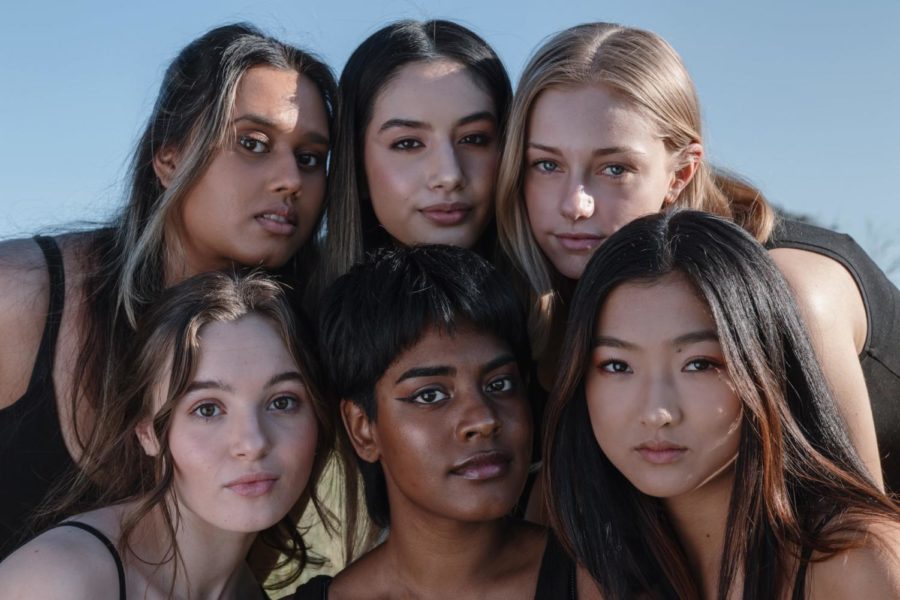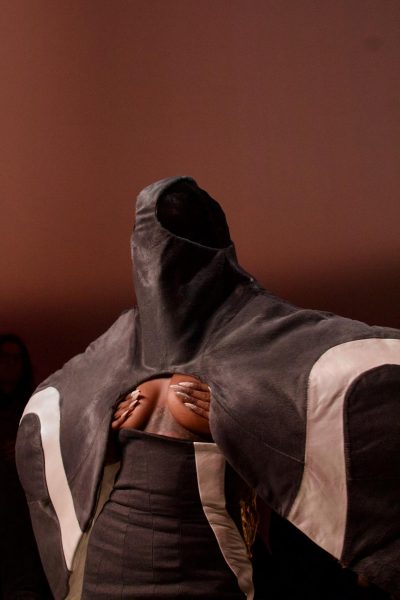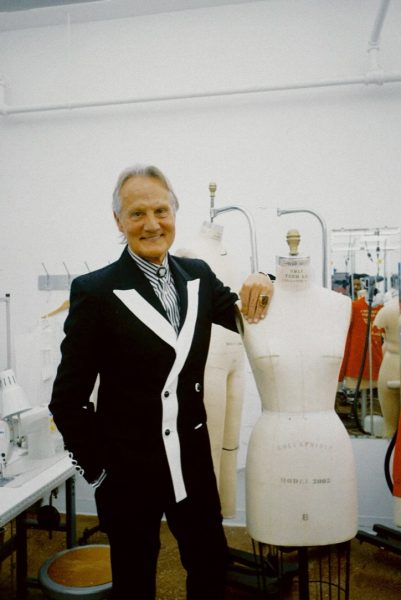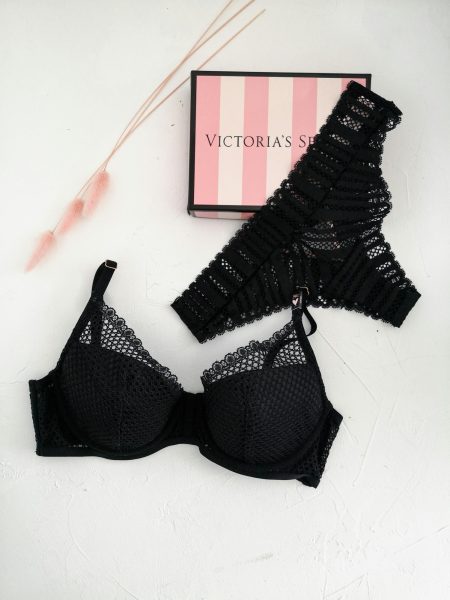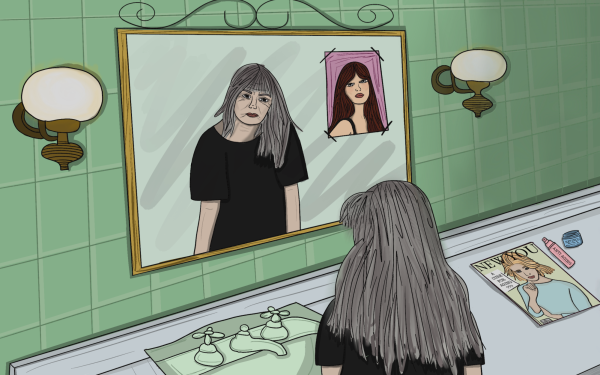everything wrong with the hypersexualization of women’s clothing
About a month ago I was getting ready to go out with friends. As I was about to leave, I felt the need to change the top I was in. Not because I didn’t like it, or it was uncomfortable, but because I felt that I was at greater risk of being sexualized because of it. This was not an unfamiliar thought for me. Every time I go out I find myself taking into consideration how I may be perceived by others, especially men, around me. I was sharing this story with my friend on the way, and to my surprise, she said that she had done the same exact thing that night. At first, I felt reassured, it was nice to know that I wasn’t the only one who thought this way. That feeling of reassurance quickly faded into an unsettling realization. All my years of overanalyzing what I wear, being told to “dress my age” and that I wouldn’t be taken seriously if I showed too much skin came to a simple conclusion; women are treated differently based on what they are wearing.
Women are taught from a young age that their bodies do not belong to them. It starts with dress codes that primarily target girls. The institutions we grow up in tell us that our bodies are distractions before we learn to count to 100. We can’t wear jeans that are too tight, a shirt cut too low or a top that doesn’t cover our shoulders for the sake of the boys around us. In the earliest stages of our life, it is ingrained in us to prioritize the male gaze over our own comfort. The article “When School Dress Code Discriminates” includes a quote from author and professor Shauna Pomerantz that says it best: “It’s saying the male response is your fault. Your body is causing negativity.” However, this isn’t just degrading to women. Pomerantz continues to say, “It is offensive to men. It suggests they don’t have the ability to talk to a female student without going wild.” Men are more than capable of controlling their own mind and body, but when dress codes like these are implemented, it teaches them that they don’t have to. It takes the responsibility off men and places it on women.
Bloomsbury Fashion Central has a brilliant article that breaks down the evidence of clothing and its correlation with sexualization. The article recalls a study from 2010 that questioned women’s motivations for wearing more revealing clothing. The results concluded that “Few women reported a desire to arouse or seduce men as their motivation or a desire to be stared at or touched. However, most men indicated that women who wore revealing dress did so to seduce men (that is to say evoke sexual advances).” This isn’t because men are primal or unintelligent, it’s because as a society we failed to educate and hold them to a higher standard in their early years.
I wanted to speak to other women to hear various perspectives on the topic, however, the testimony of a few women cannot accurately represent an entire demographic of people. In light of this, I created an online survey and shared it on as many platforms as I could. My goal was to reach a wide, diverse group of young women in my community to share their personal experiences and thoughts on the sexualization of women, particularly based on their clothing. Within minutes, responses of women came flooding in, sharing their stories.
I received 45 responses from women of all different ages, ethnicities, body types and so on. Despite the differences between these women, they almost all agreed on one thing. When asked if they believe that women being sexualized because of what they wear is an existing issue, 97.7% of them responded “yes.” In the survey, I included a free response question giving these women an opportunity to share their personal experiences or thoughts. All of them had a unique story to tell but shared very common themes.
Many of them shared that they have been told by older men and even family members that they are “asking for it” because of certain clothing items. There were also numerous responses commenting on how this fear of sexualization has muted their ability of self-expression. One young woman said, “It’s really degrading not only to the single girl but all girls in general because it really shows how immature and oversexualizing most men are as a group and it also makes women, especially young women, less confident in their ability to express themselves fully.” Similarly, another response states, “Clothing is a way of expressing yourself and feeling confident, it’s not fair that women should feel they have to dress a certain way to feel safe around people.”
Safety was a commonly remarked attribute as well. This is where the biggest issue lies. The Fight Sexual Harassment organization provides alarming statistics from a study conducted in 2018: “This study found verbal sexual harassment to be the most common for women (77%), followed by unwelcome sexual touching (51%), cyber-sexual harassment (41%), being physically followed (34%), unwanted genital flashing (30%), and sexual assault (27%).” Most women feel uncomfortable and fear for their well-being when objectified because of their clothing choice. Two particular responses that struck me were one woman saying, “I feel like I can’t wear what feels comfortable to me sometimes out of the fear of how others will interpret it and behave towards me as a result.” The other said, “…it’s hard to feel confident in what I’m wearing when I’m catching people staring at me, it’s uncomfortable.”
The hypersexualization of clothing follows us everywhere. A passionate responder told a story about her time as a student-athlete. While playing on her volleyball team, she would hear constant sexual remarks about the uniform. “Women athletes show up to play the sport, not to be a sexual object,” she said. The responses were endless. Woman after woman telling a variation of the same thing.
The survey received an incredibly positive response from both men and women. Even those who did not or could not participate showed immense support by messaging me and sharing it with their friends. Seeing the number of women who can relate to this situation is upsetting, but their passion for change gives me hope. The path to a solution comes from recognizing a problem and having the desire to fix it. The problem isn’t what we are wearing, it’s how we are perceived because of it. This isn’t to say women can’t be found attractive because of what they’re wearing, it’s just not an invitation to treat them any differently. What we wear doesn’t define how much respect we deserve. Change starts with education and accountability. It starts by teaching young men at an early age that women are more than their bodies. First and foremost, we are all humans, and we all deserve equal respect.
Support Student Media
Hi, I’m Grace Avery, the Editor In Chief of A Magazine. My staff and I are committed to bringing you the most important and entertaining news from the realms of fashion, beauty and culture. We are full-time students and hard-working journalists. While we get support from the student media fee and earned revenue such as advertising, both of those continue to decline. Your generous gift of any amount will help enhance our student experience as we grow into working professionals. Please go here to donate to A Magazine.

